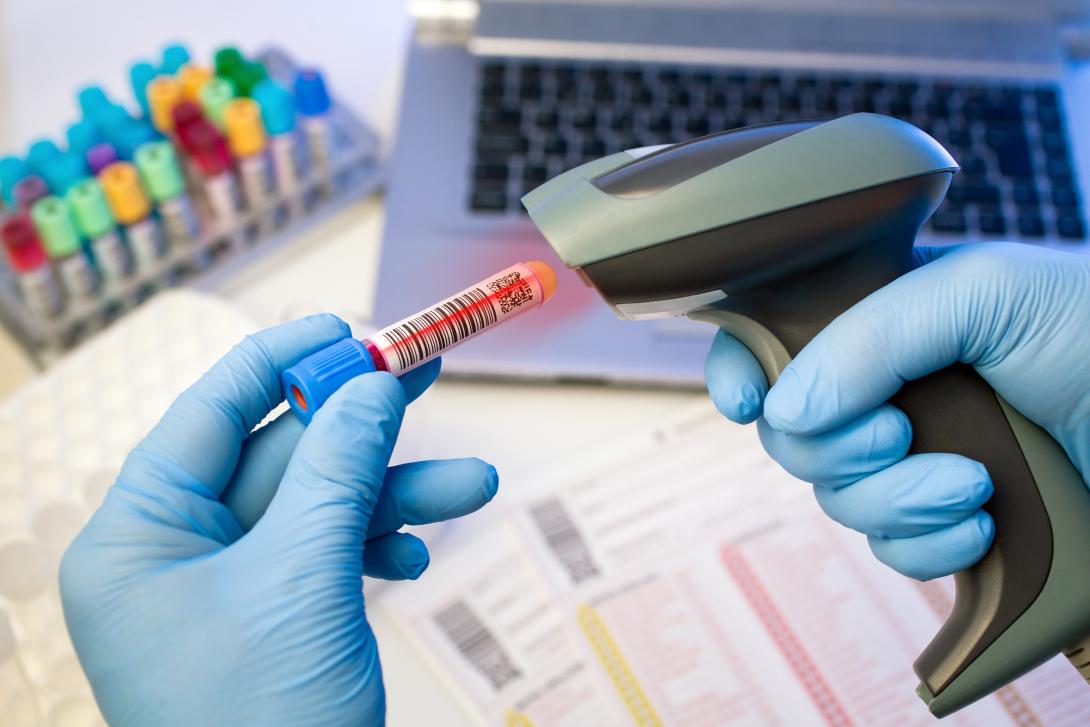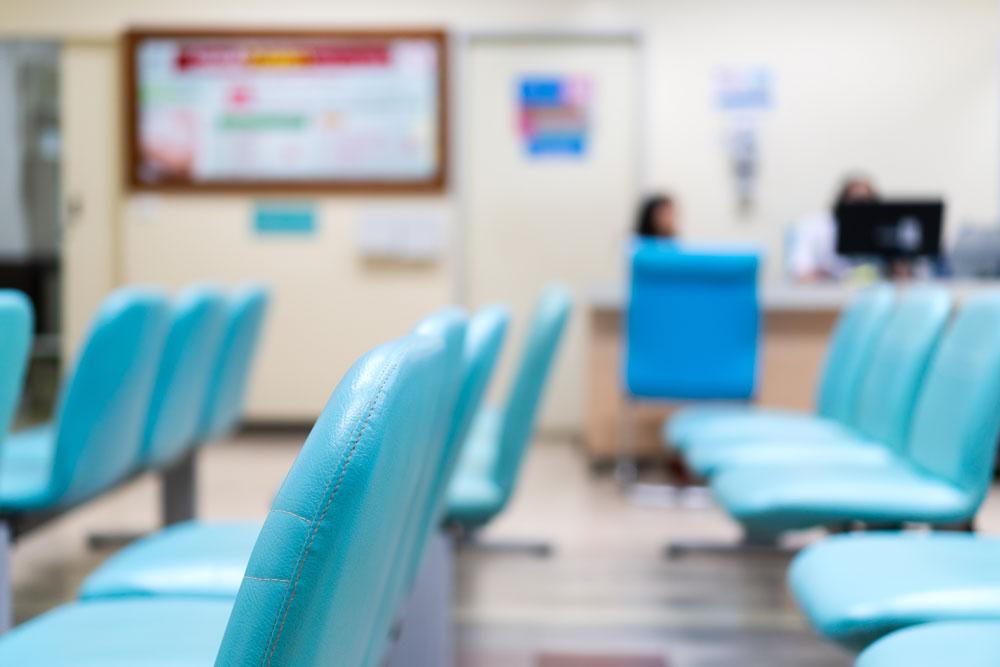Rob Drag, Scan4Safety programme manager at Salisbury NHS Foundation Trust, shares the progress, learnings and significant benefits being made at one of the six Scan4Safety Demonstrator Sites as it nears completion of the initial phase of the Department of Health backed Scan4Safety programme
Scan4Safety is a pioneering programme led by the Department of Health that is improving patient safety, increasing clinical productivity and driving operational efficiency in the NHS. Scan4Safety is taking learnings from other sectors, such as retail, to improve traceability and efficiency through the use of international barcoding standards (GS1 standards) and common ways of doing business (PEPPOL).
Barcodes have already transformed supply chain management across a number of sectors, hugely improving efficiencies and providing greater visibility and traceability of products right through the supply chain. With over five billion barcodes now scanned across the world every single day, barcodes are everywhere and these systems have developed to a point where we all simply take it for granted that they work. However barcoding has had limited use in healthcare to date. There are pockets of great examples of barcoding being used effectively in some trusts, but until now this has not been consistently applied across the whole NHS.
A world first in healthcare
When barcodes were first introduced in retail in the 1970s, retailers and suppliers had to work together. They understood that one way of working was needed so they could all reap the benefits. What is ground-breaking about the Scan4Safety programme, and what will ultimately ensure its success, is that the selection and mandated use of a common set of barcoding standards, GS1 standards, for both trusts and suppliers, is a world first in healthcare. By mandating the use of a common set of standards, for the first time the NHS will be using a common language to identify patients (Global Standard Relation Numbers - GSRNs), places (Global Location Numbers - GLNs) and products (Global Trade Item Numbers – GTINs). By being able to better identify and match patients, products, and locations, this in turn will improve how effectively products are recalled and also improve operational efficiencies, freeing up valuable clinical resource and delivering direct cost savings.
At Salisbury NHS Foundation Trust we were therefore delighted to be chosen as an early adopter of these standards, one of only six trusts to be selected as a Scan4Safety Demonstrator Site in January 2016. Since our selection, we have been implementing GS1 and PEPPOL standards across the trust and as we now approach successful completion of the initial two year programme, the benefits we are delivering to the trust are significant and exceed our initial predictions.
Improving patient safety
Prior to Scan4Safety, we faced the problem of managing product recalls quickly and efficiently to safeguard patients from avoidable harm. Although the trust had product recall processes in place, like so many other trusts, these were manual and extremely time-consuming. There was no process or single system in place for identifying or capturing implants used with a patient in a consistent or repeatable way. Whilst hard to quantify the exact amount of time spent on a product recall, anecdotal feedback suggested product recalls could take ‘many hours’ of trawling through patient records and often involved highly skilled and senior members of clinical staff.
Through the programme, the trust has introduced point of-use scanning in operating theatres, enabling implantable devices to be accurately tracked to a patient.
In October 2016, the trust launched a new Inventory Management System, Genesis Automation. This offered the ability to scan at point-of-use, so review and labelling of our entire catalogue was completed to understand which departments implanted the most. We subsequently prioritised cardiology and orthopaedics to cover 97 per cent of the trust’s implantable devices. This was followed by all remaining theatre specialties in November 2017 and will shortly be going live in day surgery, endoscopy and radiology to reach 100 per cent traceability. With 154 members of staff fully trained, the trust’s theatre staff now scan the barcodes at point-of-use on all the inputs to patient care – alongside implants (with batch and expiry information), this also includes patient ID, consumables, sterile instrumentation and staff.
In the event of a future product recall, the affected product can now be automatically traced to the patient and appropriate action quickly taken. And if an affected product is scanned at point-of-use, the handheld device alerts the surgical team that the product has now been recalled to prevent it being used on a patient. The same applies to expired products, further safeguarding patients.
Enabling clinical productivity
Prior to implementation, 32 per cent of staff in orthopaedic theatres were spending more than one hour a shift on stock-related duties. By scanning products at point-of–use, stock is now automatically replenished, releasing time for our clinical staff to care who previously had to complete these stock orders manually. For example, in cardiology two hours a week of a band six radiographer’s time has now been released.
The system also provides the hospital with accurate patient level costings. By scanning all consumables, implants, and staff to a patient, detailed costs of a procedure are now available at the touch of a button. This helps provide clinical staff with more accurate and timely data, helping them to make better informed decisions.
Our consultant cardiologist Tim Wells said: “The recent implementation of the Scan4Safety project in Cardiology provides us for the very first time complete traceability of products such as implantable medical devices used with our patients. Knowledge is power – not only does this provide us with a level of data and insight that can be used to better challenge clinical practice and variation, helping us to reduce inefficiencies and improve patient experience and outcomes – more importantly it ultimately helps to safeguard our patients from avoidable harm. In the event of a product recall, we can now easily and quickly track an affected product to the right patient.”
Driving supply chain efficiency
Through the programme, we now have a much better understanding of our inventory profile and visibility of our stock – for example consignment versus trust owned stock. We can also better track expiring stock and wastage, including identifying the reasons why items are being discarded. This enables the trust to reduce waste in the future. We have already delivered over £1.2 million in savings, primarily as a result of improved management of our stock.
Engagement with key stakeholders from the outset has been hugely important. Clinical engagement is vital and our executive clinical sponsor, our director of Nursing, Lorna Wilkinson, has played an active and pivotal role in driving internal clinical engagement. Likewise, supplier engagement has also been important to ensure the provision of accurate product related information into the trust and so we adopted a collaborative and partnership approach to encourage early adoption, building long-lasting relationships with key suppliers.
Building capability within the NHS, for the NHS
As a Demonstrator Site, we are committed to sharing such learnings with other trusts and alongside our fellow sites have developed a range of resources to support future trusts. From hosting regular site visits, to publishing ‘How to Guides’ and case studies, to developing a dedicated website, there is a wealth of useful information now available to support other trusts in their Scan4Safety implementation journey. Working with GS1 UK, Salisbury NHS Foundation Trust has also developed a suite of bitesize webinars to introduce trusts to Scan4Safety, which will be launching soon.
We may have nearly completed the initial phase of the programme, but what is exciting is that we believe this is really just the start. By implementing the standards, we’ve laid the foundations for transformational change and we’re confident the trust will now be able to continue to unlock further benefits and other use cases – for example medical equipment management. If you apply the benefits we’ve seen at Salisbury and those being delivered from across the other Demonstrator Sites, and multiply these across all acute trusts, that’s when you can really understand how impactful the Scan4Safety programme will be to the NHS.
For further information on point-of-use scanning in operating theatres, please contact implementations lead Adam Parsons: adam.parsons@salisbury.nhs.uk





